Oilage Tank Inspection Sees Improvedthe Elios 2
Drone Tank Inspections: Enhancing Safety, Cost Efficiency, and Performance in Oil Storage Tank Maintenance
Pertamina, Indonesia’s national energy company, partnered with Halo Robotics to perform a major overhaul of a large crude oil storage tank. The use of the Elios 2 drone for the inspection exceeded all expectations, delivering exceptional results.
Key Benefits at a Glance
Safety: By using the Elios 2 to collect visual data inside the tank, the need for manual entry via rope access or scaffolding was eliminated, significantly improving worker safety during the inspection.
Cost Efficiency: The Elios 2 helped reduce costly inconsistencies between asset owners and EPC contractors. It also led to savings from shorter downtimes and the elimination of expensive scaffolding setups.
Efficiency: The drone made the inspection process much more efficient, enabling systematic and repeatable inspections of aging assets for long-term monitoring and analysis.
Data Coverage: The Elios 2 provided access to previously unreachable areas, capturing high-quality visual and thermal data quickly. This allowed teams to gather more comprehensive data than ever before.
Introduction
Pertamina, Indonesia's leading energy provider, is continuously looking for ways to enhance its maintenance processes. To achieve this, they partnered with Halo Robotics, a Jakarta-based drone technology company, for a major maintenance project at one of their refineries in Balongan, which has a capacity of 125 mbsd (Thousand Barrels per Stream Day).
The specific asset involved was a massive crude oil storage tank. This tank shares many features with API 650 tanks used globally, making the methods applied here potentially applicable to any refinery that uses similar structures.
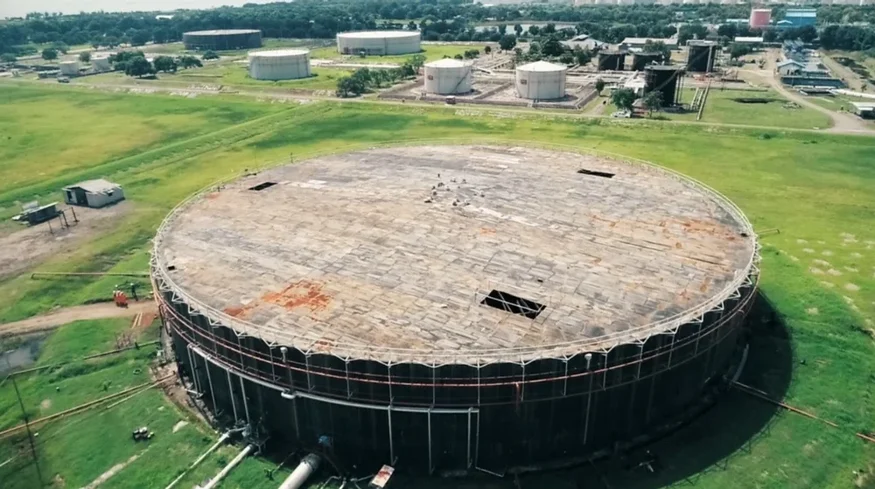
A view of the oil storage tank at the Balongan refinery
Innovating the Inspection Process
Pertamina needed to conduct a thorough inspection of a large crude oil storage tank at its Balongan refinery. The tank had a capacity of 37,000 cubic meters and was over 50 years old, built in 1972.
The main goals of the project were:
- Updating the original 1972 drawings with as-built schematics and blueprints.
- Systematically inspecting the interior to determine EPC requirements.
- Reducing the need for rope access and manned entry into confined spaces.
- Improving the overall efficiency of EPC maintenance processes.
To achieve these objectives, Pertamina organized the work into two key outputs: creating a Digital Twin and conducting a Confined Space Inspection. This case study focuses on the latter.
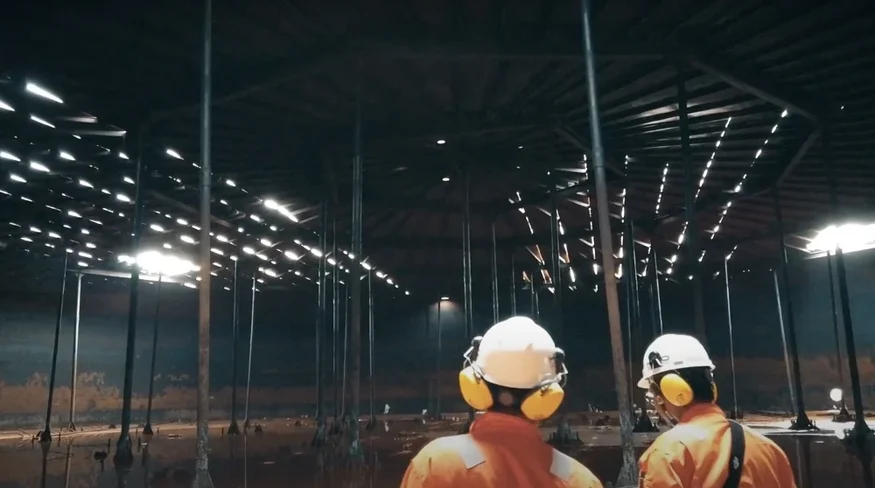
Inspectors working inside the oil storage tank
Implementing the Elios Drone for Tank Inspections
Halo Robotics was tasked with implementing new technologies to meet both project goals. For the confined space inspection, they chose the Flyability Elios drone due to its advanced features, including:
- Collision-tolerant cage for safe indoor inspections.
- High-resolution RGB and thermal cameras for detailed visual data capture.
- Powerful lighting systems for clear visibility in dark environments.
- Stabilization and distance lock for precise control in GPS-denied areas.
- Inspector software for easy data review and report generation.
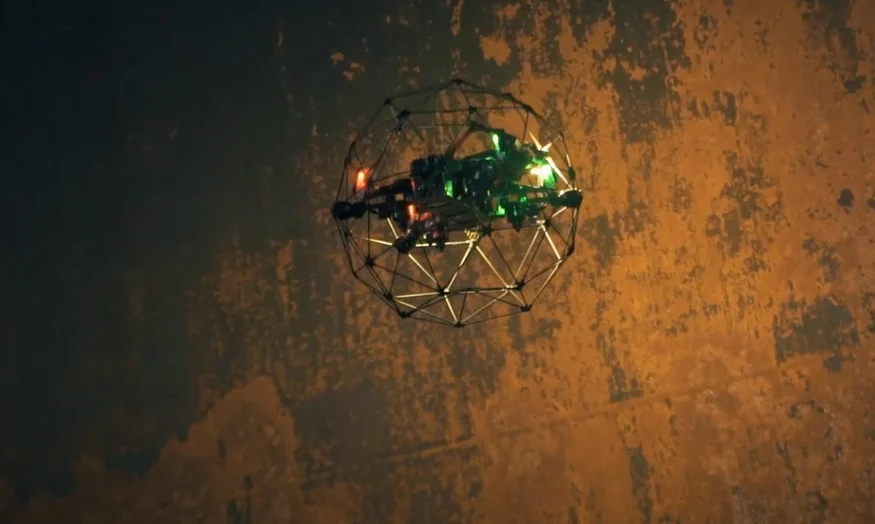
The Elios 2 in action during the drone tank inspection. The Elios 3 now supports LiDAR and close-range visual data collection.
Collecting Visual Data Through Drone Inspections
The Elios 2 performed exceptionally well during the confined space inspection, surpassing all expectations. Compared to traditional methods requiring physical entry, the drone offered improved safety, cost savings, and operational efficiency.
"The results from this drone technology have exceeded our expectations. These operations will support preventive maintenance, help identify defects, and improve speed and accuracy," said Almuayat Librata, Oil and Gas Transportation Manager at Pertamina EP.
Details of the Drone Tank Inspection Mission
Halo Robotics planned flights to inspect various parts of the tank, including the shell, welds, rafters, girders, joints, and roof. Over five days, 20–22 flights were conducted daily, resulting in 760 GB of video footage—both 4K RGB and thermal video.
This data was processed using Flyability’s Inspector software, allowing for efficient review, annotation, and report generation. An API-certified inspector reviewed the data, and the final report was completed in 14 days.
Examples of Point of Interest Reporting
Corrosion Identified – Tank Joint Left Side
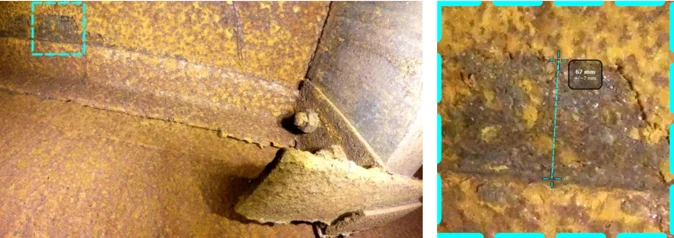
Inspector comments:
⦠2x bolts counted
⦠Shrinking thickness of steel plating and supports
⦠Significant corrosion observed, 0 mm - 67 mm from the joint
⦠Distance measurement: 67mm +/- 5mm
Flaking and Oil Build-Up Observed – Tank Joint Right Side
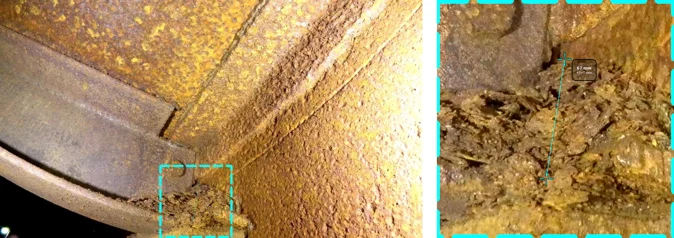
Inspector comments:
⦠2x bolts counted
⦠Significant flaking or oil material deposit observed
⦠Homogeneous deep corrosion
⦠Deformation and exposure of raw metal to oxidation and galvanic reaction observed.
⦠Distance measurement: 67mm +/- 5mm
Example report generated by Flyability’s Inspector software
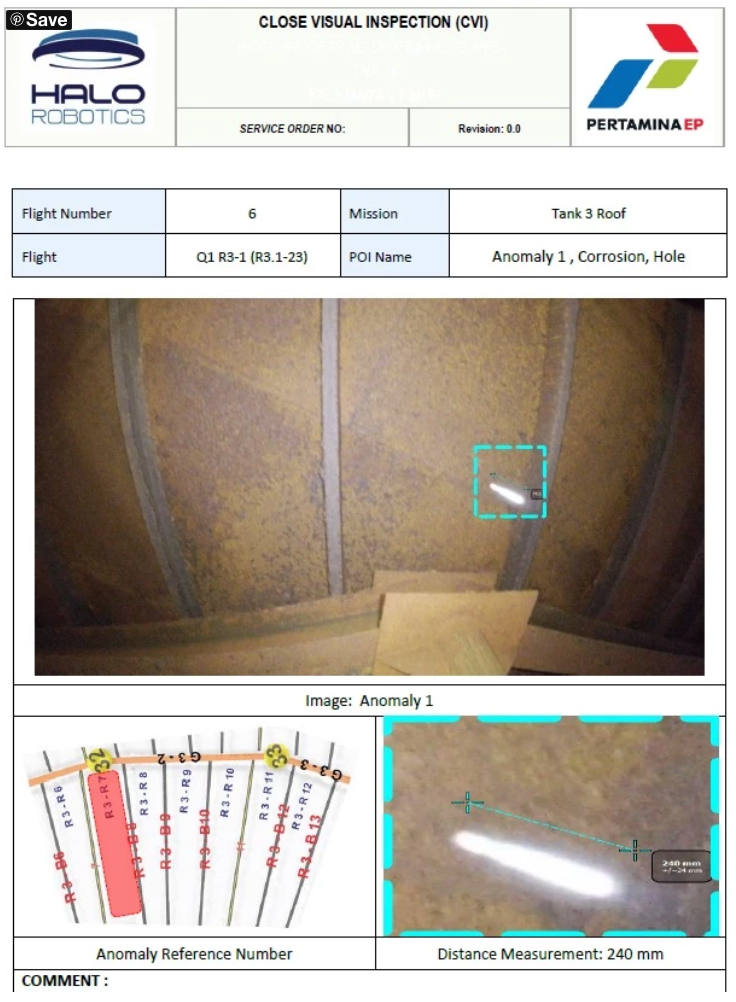
Looking Ahead: Future of Drone Tank Inspections
The success of this project has encouraged Pertamina to explore further use of drone technology across its operations. The Elios 2 proved that even the largest oil storage tanks can be systematically inspected safely and efficiently without the need for human entry.
"We believe that adopting this type of drone technology will improve tank inspections by reducing risks and costs while making the process safer and more efficient," said Erikson Nainggolan, Operation Planning Assistant Manager at Pertamina EP.
With this successful implementation, Pertamina is now exploring how to expand the use of drones for other maintenance projects across its network of refineries in Indonesia.
Crane Components,Construction Vehicle Fluid Pump,Hydraulic Diesel Vehicle Gear Pump,Power Transmit Instrument Crane Gear Box
HENAN MAJOR INDUSTRIES IMP. & EXP. CO., LTD. , https://www.henanminingcrane.com